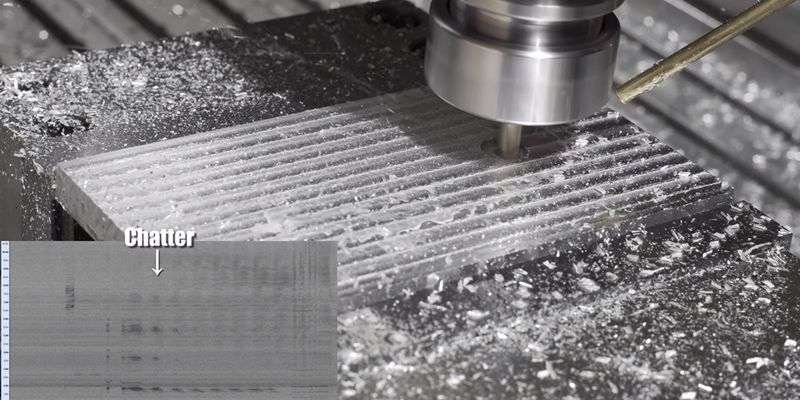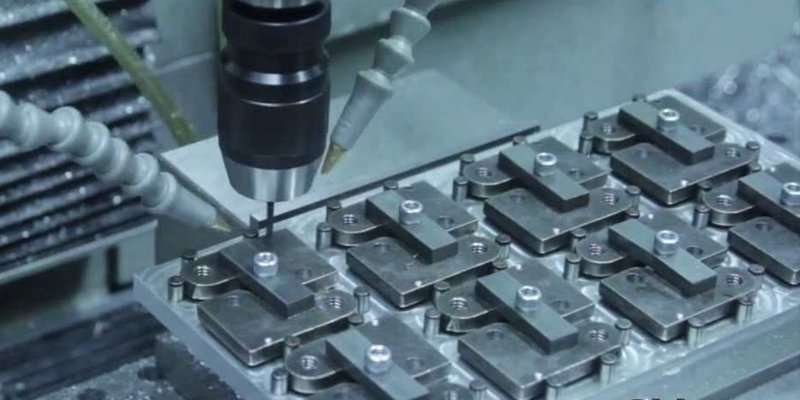Parts or components for commercial aircraft, military jets, satellites, and missiles must tolerate severe and variable temperatures and altitude pressures to work effectively. CNC machining is one production technique that guarantees the production of mission-critical, safe, and dependable parts.
In this article, we highlight aerospace CNC machining, including its benefits, types of materials used, and ideal surface finishes. We’d also provide you with information on the different applications of CNC machined aerospace parts.
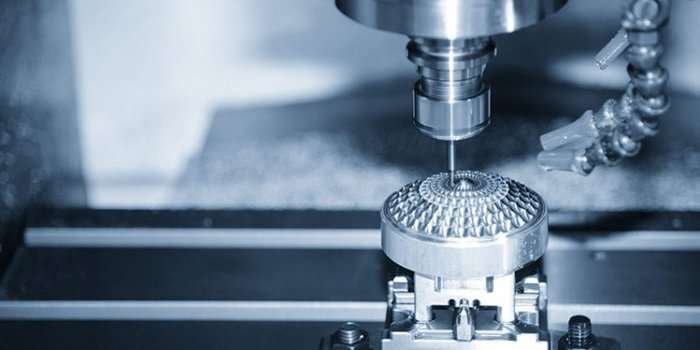
Table of Contents
ToggleWhat is Aerospace CNC Machining?
Aerospace CNC machining is the process of creating and maintaining aircraft and spacecraft parts utilizing computer-aided tools and equipment. It is an automated manufacturing process that uses software and pre-programmed code to move cutting tools.
Although many sectors use CNC to create components and goods, the aerospace sector is among the most sensitive since there is no room for error.
Additionally, due to the high consistency and repeatability of the process, producers may use CNC machines to make a single component and prototype or thousands of pieces with the same results.
Benefits of Using CNC Machining for Aerospace Parts
CNC aerospace machining is a perfect fit for the fabrication of aircraft parts due to its many benefits. Among its advantages are:
High Part Precision and Accuracy
CNC machining, which produces components with exceptional accuracy and consistency, is known for its precision. CNC machines have a very little margin for error and are accurate to a few micrometers due to the minimal human error.
In the aerospace sector, CNC machining ensures the fabrication of parts that precisely fit aircraft parts. With CNC aerospace components machining, you are assured of tight tolerances, few production flaws, and long-lasting, high-quality parts.
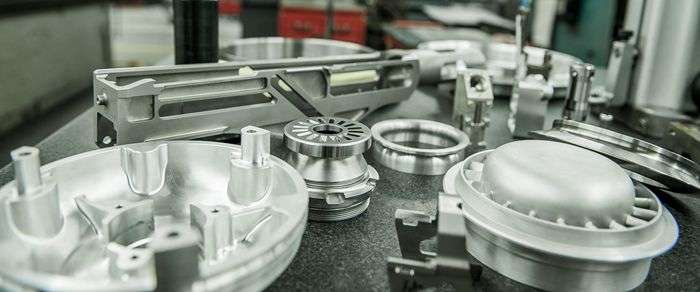
Complex Geometries Production
Extensive designs and complicated geometries that balance strength and weight are frequently used in aerospace components. This job is ideally suited for CNC machining since it is easy to use to create exactly high-value, very complicated parts. In addition, moving cutting tools in many directions allows CNC machines to precisely carve out intricate components like engine casings, turbine blades, and airfoils.
Production Efficiency
Manufacturing productivity in the aerospace industry has been greatly increased by the automation and programmability of CNC machining. CNC machines can run constantly with little human involvement after they are programmed. Multiple operations can be carried out simultaneously on various component surfaces by multi-axis CNC machines.
Pre-programming and re-programming CNC machines is quick and simple. This makes producing several parts or components on the same machine possible in a single shift. Consequently, reducing production cycles and downtime and increasing productivity overall.
Reducing Production Costs
Although they are expensive, industrial CNC machines provide tremendous long-term cost-saving prospects. CNC machining aids in minimizing setup times, streamlining production, and lowering manufacturing costs by doing away with the requirement for unique jigs, fixtures, and specialized equipment for each item.
Over time, cost reductions are also made possible by the increased productivity and efficiency that CNC machining offers.

5-Axis CNC Help to Machine Complex Design in the Aerospace Industry
Many different types of aerospace parts need complicated CNC machining. It makes it reasonable to configure many of these elements using milling machines with 5-axis machining. The parts used in this industry frequently have intricate shapes that make 3- or 4-axis operations challenging.
While making many parts without a 5-axis could be feasible, machinists will need to change part orientation constantly. The reason is that to get the geometry right, they could only process one portion of that part before removing it, changing its position, and then machining the next section. This would consequently increase the time spent machining and the probability of machining error.
In general, the 5-axes CNC machining technique can better handle the complexity and range of aeronautical components. It allows engineers to mill, drill, or fabricate parts to the appropriate aircraft specification. Additionally, 5-axis machines fulfill the high-performance and tolerance requirements for CNC machining in airplanes.
Materials Used in Aerospace CNC Machining
Aerospace machining is a flexible technique. However, not all materials are suitable for use in aeronautical components. The materials used in aerospace machined components are listed below.
Lightweight Metals
Strength and weight are the two major properties companies in the aerospace industry look out for when choosing materials. Materials used in this sector must have an ideal strength-to-weight ratio. This is why a strong material like pure steel is not used in making aircraft due to its weight.
The lightweight metals used in making aerospace parts include:
Titanium and Titanium Alloys
The industry that uses titanium alloy extensively worldwide is aerospace. The metal is corrosion-resistant, performs well at high temperatures, and has a strong strength-to-weight ratio. Titanium is now often used in CNC aircraft production.
It’s vital to remember that titanium might be more challenging to CNC process since it’s tougher than aluminum. Warpage could occur when CNC machining titanium due to tool wear and heat accumulation. Hence, titanium aerospace machining must be performed with a larger chip load and lower machine RPM. Titanium finds application in aircraft components such as casings, shafts, blades, discs, and blades.
Aluminum and Aluminum Alloys
Due to its high tensile strength and lightweight nature, aluminum is one of the most often utilized metals for aircraft component manufacturing. Furthermore, because aluminum is so malleable, CNC machines can easily machine it.
The aerospace industry’s most preferred aluminum alloy for precision CNC machining aluminum is aluminum 7075, which mostly consists of zinc as an alloying element. It provides decent fatigue strength. This material finds use in support structure components, including fuselage and wings.
Engineering Plastics
Plastics may be a useful substitute for metals because of their low weight, superior impact and vibration resistance, sealing properties, and chemical resistance. Besides, they offer higher electrical insulation than metals and are perfect for CNC prototype machining.
Since aviation polymers must abide by certain toxicity, smoke, and flame criteria, not all technical plastics are suitable for use in CNC aerospace machining. Therefore, it is important only to use High-performance polymers like Ultem, PEEK, and polycarbonate in aircraft machining.
Engineering/high-performance plastics find application in aerospace as they are used to make backlit instrument panels, housings, valve components, cabin interiors, tray tables, wear pads, armrests, tubing, and insulation.
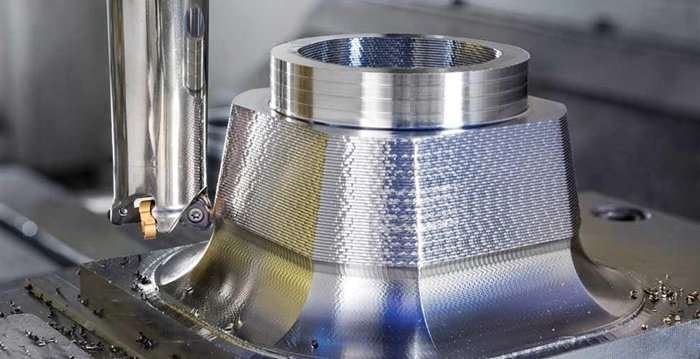
Surface Finishes for CNC Machined Aerospace Parts
A variety of surface finishes are available for CNC machined parts, but not all are suitable for use on aerospace machined parts. Below are the ideal surface finishes for use on aerospace parts.
Passivation
The functionality and surface quality of goods are improved using the post-processing technique known as passivation, which is frequently employed in aerospace machining. After the machining process, the part’s surface could have micro-roughness or surface contaminants, which might impair the part’s performance over time. Passivation eliminates these problems since it increases aircraft parts’ corrosion resistance and lowers maintenance frequency.
Anodizing
This kind of surface finish entails submerging the aircraft component in an electrolyte solution, which results in a consistent oxide coating on the component’s surface. Type II and Type III anodizing are used on aviation components.
A decorative coating is created on the part’s surface via type II anodizing. This layer is frequently thin, making the aircraft component’s surface vulnerable to corrosion and wear when exposed to harsh elements.
On the other hand, type III anodizing creates a harder coat layer on the part’s surface that is more protective. Aluminum can be anodized as a surface treatment to prevent corrosion and increase resistance.
Powder Coating
Powder coating is the most popular surface treatment for metallic aircraft parts, and its renown is a result of its functional versatility and durability. Aerospace components with powder coating are resistant to fading over time and scratches.
Additionally, this surface treatment comes in various colors to give aircraft component producers more freedom and enhance aesthetics.
Polishing
One surface treatment that is perfect for usage on aerospace parts is polishing. It is a simple process that leverages the concept of friction to smooth any surface. The roughest aerospace part surface is frequently the starting point for the procedure, which continues until a smooth, appealing surface finish is left
Additionally, polishing can improve the longevity of an aerospace material by reducing the likelihood of chipping or breaking. However, the problem is that polishing aeronautical parts requires a lot of time and money.
Challenges of CNC Machining in the Aerospace Industry
Although CNC machining is a very adaptable and popular production method in the aerospace industry, it does have certain restrictions. A solid grasp of the design requirements, process optimization, and tool advances may help overcome many challenges. These limitations include:
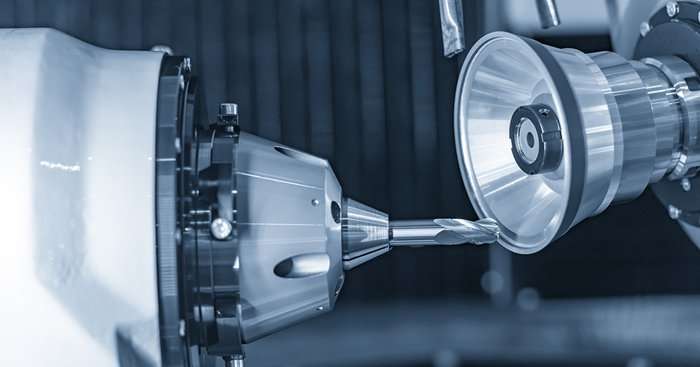
Operator Expertise
CNC machining requires trained operators to program, run, and maintain the machines efficiently—additionally, CNC programming and operation call for specialized knowledge and training because of their intricacy. Finding and keeping talented CNC operators may be difficult, especially with a talent shortage.
Material Choice
Aluminum, titanium, and composite materials are just a few of the materials that may be machined using CNC technology. However, some materials could be difficult to work with. For instance, due to their hardness or heat resistance, several modern high-temperature alloys or superalloys like titanium used in aircraft engine components might be challenging to manufacture. Such materials might need to be machined successfully using specialized equipment and methods.
Shape Complexity and Size
Parts with relatively basic to fairly complicated geometry can be produced with CNC machining. However, CNC machining could not process exceptionally complex or highly curved designs. There could be limitations because of undercuts, deep recesses, or interior features that are hard to access with common cutting instruments.
An extremely complex or detailed product would need specialized tooling or additional procedures, which would lengthen the manufacturing process and increase costs. In addition, large-scale parts, like airplane wings or fuselage pieces, could be more difficult for regular CNC machines to handle.
Surface Finish Options
Despite the great precision and accuracy that CNC machining can produce, further post-processing may be necessary to improve the surface quality of machined items. Aerospace parts frequently have stringent surface finish requirements, such as minimal surface roughness, no burrs, or certain coatings. These criteria could need additional procedures, such as grinding, polishing, or coating, which lengthen the production process and increase its expense and complexity.
Tips and Practices When Machining Aerospace Parts
CNC aircraft component machining is a difficult process. Here are some pointers to bear in mind when working on a CNC aerospace machining project or heading to an aerospace CNC machine shop.
Design Considerations
One of the most crucial stages in creating a product is the design phase, which must be taken seriously. Optimizing the part’s design by conducting a DFM analysis could reduce the time needed to prepare the workpiece and boost reliability, productivity, and efficiency.
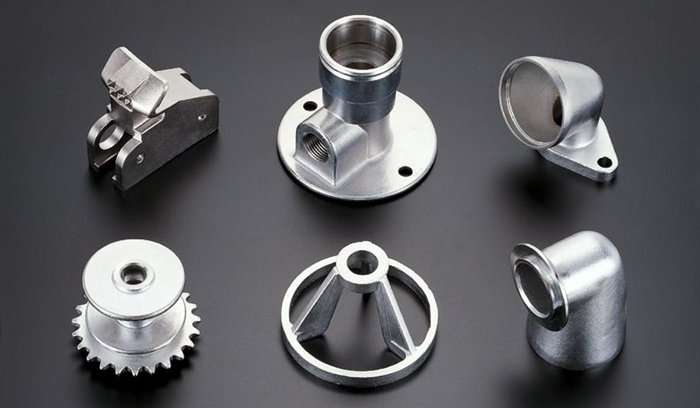
Material Selection
High-strength materials, including titanium, aluminum, and stainless steel, are frequently used to make aerospace parts. It is critical to select the appropriate material based on the part’s intended usage and the environment in which it will be utilized.
Tolerances
Aerospace parts frequently need to conform to strict tolerances to guarantee correct fit and performance. It’s crucial to employ the appropriate CNC machines and cutting tools methods to attain the necessary tolerances.
Surface Roughness
A high-quality surface finish is frequently necessary for aerospace parts to decrease friction, increase wear resistance, and improve corrosion resistance. It is crucial to employ the proper cutting equipment and machining methods to obtain the desired surface quality.
Applications of CNC Machined Aerospace Parts
Many aircraft parts and components are produced using CNC machining. Among only a few of them are:
Electrical Components and Avionics
Various electronics utilized in aircraft systems, including control panels, connections, sensor housing, and instrument cluster components, are frequently produced using CNC machining. These pieces need to be machined with extreme precision for appropriate operation, electrical connection, and component integration.
The electrical, instrumentation, and navigation systems used in airplanes are called avionics. To accommodate different components and assure electromagnetic shielding, avionics enclosures need exact cuts, holes, and mounts, features that can only be produced using CNC machining.

Structural Components
CNC machining is essential in producing structural elements including airplane frames, wing spars, bulkheads, brackets, and landing gear components. To resist the intense pressures of flight, these components require excellent strength, accuracy, and surface finishes.
Engine Parts
Turbine and compressor blades, fuel nozzles, fan discs, engine casings, and combustion chambers are just a few examples of the crucial engine parts for aerospace that are frequently produced using CNC machining.
Exterior and Interior Trim
Interior and exterior trim components, such as cabin panels, winglets, fairings, airframe assembly, logos, and ornamental accents, can be made using CNC machining.
Aircraft Shafts
The transfer of power in aviation applications is primarily dependent on shafts. CNC machining is a suitable manufacturing option to produce these strong parts composed of heat-resistant materials.
Get CNC Machining Aerospace Part at XinCheng
XinCheng has built satisfaction for quality, dependability, cost-effectiveness, and on-time delivery among aerospace machining companies. Our engineers and machinists will collaborate closely and effectively through all phases of product development, from prototype to production, to satisfy your needs for aerospace CNC machining projects.
Since we know that each project and its application are distinct, we provide every customer with customized, yet workable solutions, such as an array of materials and surface finish options. We are also handled with comprehensive CNC machining services including 3, 4, and 5-axis machining, precision turning, EDM, and so on. Just contact us to get a free quote!
FAQs
Is precision important when CNC machining aerospace parts?
Precision machining is a crucial process in making aircraft components. For CNC machining aviation parts, this industry has far higher production requirements and stronger safety laws.
Why 5-axis machining is important in aerospace manufacturing?
CNC machining with 5-axes of movement, including rotating axes (A and B) and the conventional X, Y, and Z axes, is called 5-axis machining. The aerospace industry can produce structurally optimized components with less weight and better performance because of its ability to machine complicated forms and curves using 5-axis CNC machining.

